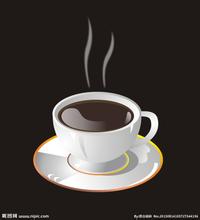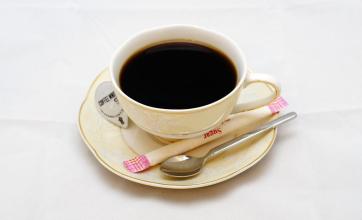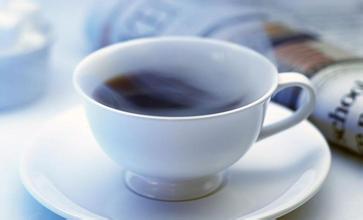Video Teaching introduction of how to make Milk foam in Electric Milk Bubble Machine
Video Teaching introduction of how to make Milk foam in Electric Milk Bubble Machine
The first standard is that the surface should be reflective. Delicate, velvet-like, slippery. The second criterion is that there is no coarse foam on the surface. This requires a lot of foam control ability, of course, this is also the premise of reflection. Those larger than the diameter 1mm are called coarse foam. The third standard is: in the case of the same amount of milk (all added to the position at the bottom of the cylinder mouth), whether it is 60% full or 70%, 80%, 90% or full, the temperature should be the same. The fourth standard is to make two cups of cappuccino, using the WBC standard cup. After the foam is poured into the cup, there is no drop left in the jar. The above four standards have been achieved, and I think it is at least a good jar of milk foam in terms of vision, feel and technology. Earlier also mentioned a sense of hearing, which depends on the milk, just hit the milk foam, must not hear a very continuous burst sound, which can ensure the persistence of the milk foam in the cup.
Milk foam can not be injected into espresso to solve the problem that milk foam can not be successfully injected into espresso when making cappuccino coffee. Why?
The first is that the milk foam is 80% to 90% full, which can be solved by 10% less than dry.
The second is that the crema surface of the espresso is too shallow from the bottom of the cup, causing the foam to float on the crema as soon as the foam is injected.
Solution: tilt the cup as much as possible to increase the depth of the surface and bottom of the crema meter. When injecting, inject it to the deepest point.
The third is that the milk foam is close to the cup when it is injected with espresso, resulting in insufficient strength for the foam to penetrate the crema.
Solution: 10-15cm higher than the cup mouth to inject milk foam, increase the acceleration of foam injection into crema, so that it can smoothly penetrate crema.
The fourth is to solve the problem by means of integration. If the foam is still white on the crema when it is injected (for a small amount, the surface is about 1 beat 3), then immediately reduce the amount of foam injected, make a circle in the cup, and then lift the flower jar up, you can flush the whitened one under the crema.
Fifth, when you pull flowers with seven-point full or six-point full milk foam, the crema will be washed away without increasing the flow. Solution: reduce the foam flow and slowly circle the entire crema until the blend is in place.
On the Classification of cappuccino
If I understand this question correctly, I can classify cappuccino into three categories according to the quality of milk foam, one is wet cappuccino, one is dry cappuccino, and the other is half cappuccino in between. So how do we distinguish between these three kinds of cappuccino? If the foam technology passes, you can use the quality of the foam to distinguish as follows: premise: 600ml (medium) pull the flower jar around, and fill the milk at the bottom of the nozzle. First, the wet cappuccino milk foam is 6 or 7% full; (this milk bubble to do leaves and other lines require more pattern is very good-looking, at the same time, this milk foam can also be used to do latte). Second, the dry cappuccino milk foam is full. Third, the half cappuccino milk foam is 80% full; I prefer 90% milk foam. This foam is great for heart, apple and tulip patterns. In fact, what we usually use most is this kind of milk foam, which is used to make the cappuccino that is common in our daily work.
Tip: practice now. I want to hit a jar full of 70% milk foam, never 90% full. Let's do it!
Five misunderstandings of milking
For milk foam, there are several misunderstandings that we need to understand, so that we can better understand milk foam.
The first misunderstanding: the use of shaking up and down to pull the vat to remove the rough foam on the surface. This is a very good method, but many friends have a strong dependence on this method, their own milk foam did not play well, do not summarize why they did not play well, but use this means to make up for it. In the long run, there will be dependence. Here I must say that if we only rely on this way to get rid of the coarse foam, there is no way to improve the foam technology, nor can we practice the advanced skills of pulling flowers.
The second misunderstanding: scoop off the coarse foam with a spoon. This method is what I reject most. Although some contestants use some methods in the competition, I think this is because their milk foam technology does not pass, the surface is too thick to shake off, can only scoop. For those who use similar methods to deal with milk bubbles, be sure to strengthen your steam control technology in milk foam.
The third misunderstanding: after beating up the foam, put it aside for a while. This method is very annoying, which is a form of expression that the milk foam technology has not been introduced yet. This will aggravate the layering of milk bubbles, and the integration of hot milk and foam will not be easy to complete. if you don't pay attention to it, it will become milk and foam. The whole cup of coffee doesn't balance the taste.
The fourth misunderstanding: the two jars will fall in a very high position, the original purpose is to merge, but to arouse more coarse bubbles.
The fifth misunderstanding: the milk foam is not good, blame the steam. The author believes that the steam pressure of the coffee machine (that is, boiler pressure) is relatively easy to grasp in 0.8BAR, this pressure is very long, and it is easy to understand the principle of milk foaming, but it takes about 13 seconds to make a cup of milk foam, ah, not as fast as the pressure. If the air pressure is 1. 0 or 1.1BAR, the way and method of bubbling will change, but the principle is the same. (at this point, it is necessary to rule out the phenomenon of "vomiting" caused by impure steam, and the flower jar is also shaking violently. If this happens, please empty the steam and try to heat it fully again.)

Important Notice :
前街咖啡 FrontStreet Coffee has moved to new addredd:
FrontStreet Coffee Address: 315,Donghua East Road,GuangZhou
Tel:020 38364473
- Prev

Introduction to the flavor of wet planing red honey red wine washing and drying half of raw coffee and beans
The wet planing method greatly shortens the drying time, the fermentation period and sour taste of coffee beans are greatly reduced, but the thick thickness is increased, with obvious caramel and fruit aromas. slightly woody and herbal flavor, this is the classic regional flavor of Sumatran coffee. And the wet planing method is also allowed because the seed shell is shaved off in the production process.
- Next

Introduction to video tutorials of coffee drawing and milking skills
Video tutorials on Coffee Breaking skills introduce how to get to know a dead angle between a frothing jar and the steam tube of a coffee machine. After watching a lot of domestic and foreign baristas beating milk foam, coupled with their own constant attempts, I found that playing milk foam has a dead angle, just like playing video games, some dead corners can not hit you, but you can hit others. This angle is very good in words.
Related
- What is the meaning of lactic acid fermentation with coffee bean treatment?
- How to judge the state of foam by sound?
- How does the latte pull out the unicorn pattern? Come to get for a little trick to improve the flower pull!
- Will flower pulling affect the taste of the latte?
- Do you know the history of coffee?
- The difference between honey treatment and sun washing what is raisin honey treatment?
- What kind of milk can a novice use to make coffee foam to keep the foam longer? The correct method and skills of milking tutorial sharing
- Why do washed coffee beans taste sour? Flavor characteristics of washed Coffee
- Introduction to the skill of how to practice the size and height of water injection around the circle of hand-brewed coffee
- How do beginners practice coffee flower drawing from scratch?

